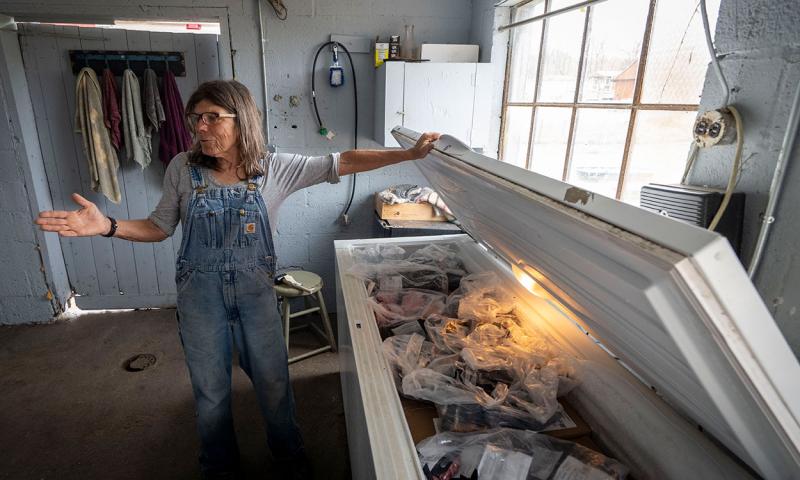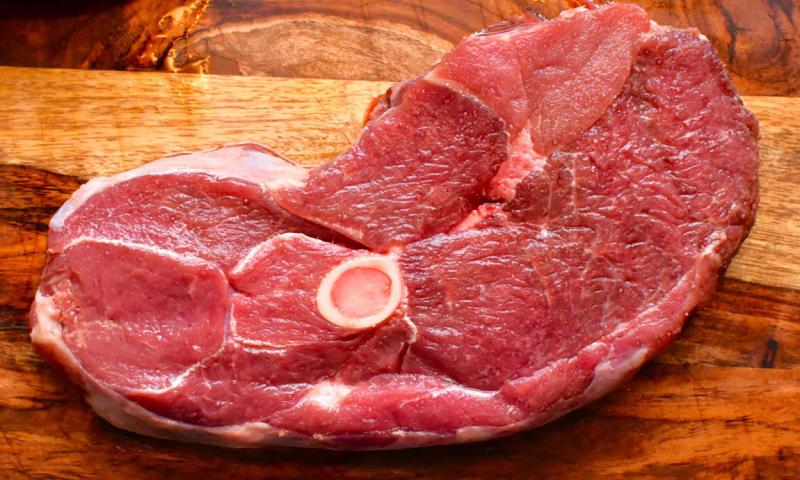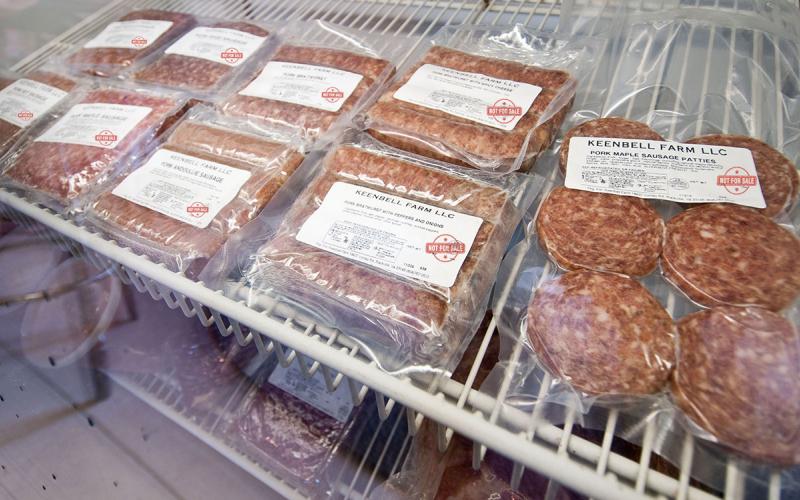
Before diving into direct marketing lamb products, it is important to understand available marketing channels. Direct marketing falls into the non-traditional market of the lamb industry as opposed to the traditional (commodity) market. The non-traditional market is broken further into two market channels: 1) direct to consumers (in essence, farmers markets, on farm sales, online) and 2) the ethnic market. Each market has its own preferences and seasonal fluctuations but can be profitable. This article will focus solely on the direct-to-consumer portion (referred to in this article as “D2C”) of the non-traditional market.
Opportunities
The growing interest in food chain transparency has fostered the growth of direct marketing meat to consumers. This form of marketing includes farmers markets, on-farm sales, and online marketplaces. Purchasing local products provides a social connection and level of trust that conventional grocery stores often lack. In 2020, U.S. producers sold $9 billion of food products to local (within 400 miles or their state) consumers, institutions, retailers, and wholesalers (U.S. Department of Agriculture National Agricultural Statistics Service, 2020). Additionally, consumers have been more comfortable with purchasing food online. Immediately following the 2020 shutdown, online local food purchases more than tripled (Thilmany et al., 2020) opening another option for D2C marketing. Also, during the pandemic, more people tried lamb for the first time and became returning lamb purchasers. Lamb continues as one of the fastest growing retail meat sales (IRI, 2021). This upward trend in consumption also supports the growing opportunity to sell lamb D2C.
Considerations
However, D2C marketing comes with its own set of challenges. Risks can be much higher when direct marketing your product. Advertising and marketing lamb becomes your responsibility and requires much more time than simply selling lambs through traditional markets. When starting a D2C enterprise, determine your breakeven. Then, set your desired margin. This can be a percentage or a dollar value (for example, 50% markup or $50 per lamb). A great place to start with determining your pricing is to look at lamb marketed in the grocery store and at the USDA National Monthly Grassfed Lamb and Goat Report.

Additionally, D2C requires developing your local customer base and determining what products your consumers prefer. The most-important goal for direct marketing is ensuring that your customer has a positive eating experience. When it comes to lamb, consumers want a lean, tasty product. Try having your lambs processed into a variety of different cuts and processed products to find out what your customers prefer and build rapport. For example, instead of traditional roasts, have your legs and shoulders cut into steaks. This creates smaller portion sizes, which may be more attractive to consumers. If a processor is willing, lower-valued cuts, like the shoulder and neck, could be ground into higher value, processed products, such as brats or summer sausage.
Another large aspect that can be intimidating to D2C producers are the laws, regulations and inspection requirements, including finding a USDA-inspected processing facility. The regulations and resources for D2C marketing in South Dakota can be found in the SDSU Extension resources, Meat Inspection in South Dakota: Requirements and Resources for Processing and Selling Meat and Meat (Not) For Sale.
How Much Lamb Can You Expect After Processing?
Once you have developed a working relationship with a processor, you will need to know how much meat you will get back. For lambs, calculating red meat yield is simple.

Step 1
Determine your carcass weight.
- The average dressing percentage for lambs is 50%. Dressing percentage is the percent of carcass (meat and bone) once the head, hide, feet, and viscera have been removed. The equation for carcass weight is as follows:
- Live Weight × 50% = Carcass Weight
Step 2
Determine your retail cut weight.
- In this step, 50% accounts for cooler drip loss, fat trim and bone. Boneless, closely-trimmed retail cuts estimate the amount of red meat yield from a lamb carcass. The equation for determining boneless retail cut weight is as follows:
- Carcass Weight from Step 1 × 50% = Boneless Retail Cut Weight
- Note: For traditional, bone-in cuts, multiply your carcass weight by 70% instead.
Example
To calculate the boneless retail cut weight for a 150-pound live lamb:
- Step 1: 150 pounds live weight × 50% = 75 pounds carcass weight
- Step 2: 75 pounds carcass weight × 50% = 37.5 pounds of boneless retail product
In other words, you can expect approximately 25% of the liveweight of the animal in boneless product. For traditional bone in cuts, although the weight is higher, keep in mind that the amount of edible lean will be the same.
Conclusion
The non-traditional market has opened the doors to many opportunities in the lamb industry. Although the dynamics and specifics of the industry are challenging to track, many people have benefitted from entering this market channel. As a producer, it is important to assess the potential premium this market has to offer, but it’s also important to be informed about the additional marketing and unique requirements that come with both D2C. For additional resources on farmers markets and D2C business development, reach out to SDSU Extension, the South Dakota Sheep Growers Association or the South Dakota Specialty Producers Association.
References
- IRI. 2021. Meat Department Sales Rise Above 2020 Levels in August.
- Thilmany, D., E. Canales, S. A. Low, and K. Boys. 2021. Local Food Supply Chain Dynamics and Resilience during COVID-19. Applied Economic Perspectives and Policy. 43:86–104. Doi.
- USDA NASS. 2020. 2020 Local Food Marketing Practices Survey.


